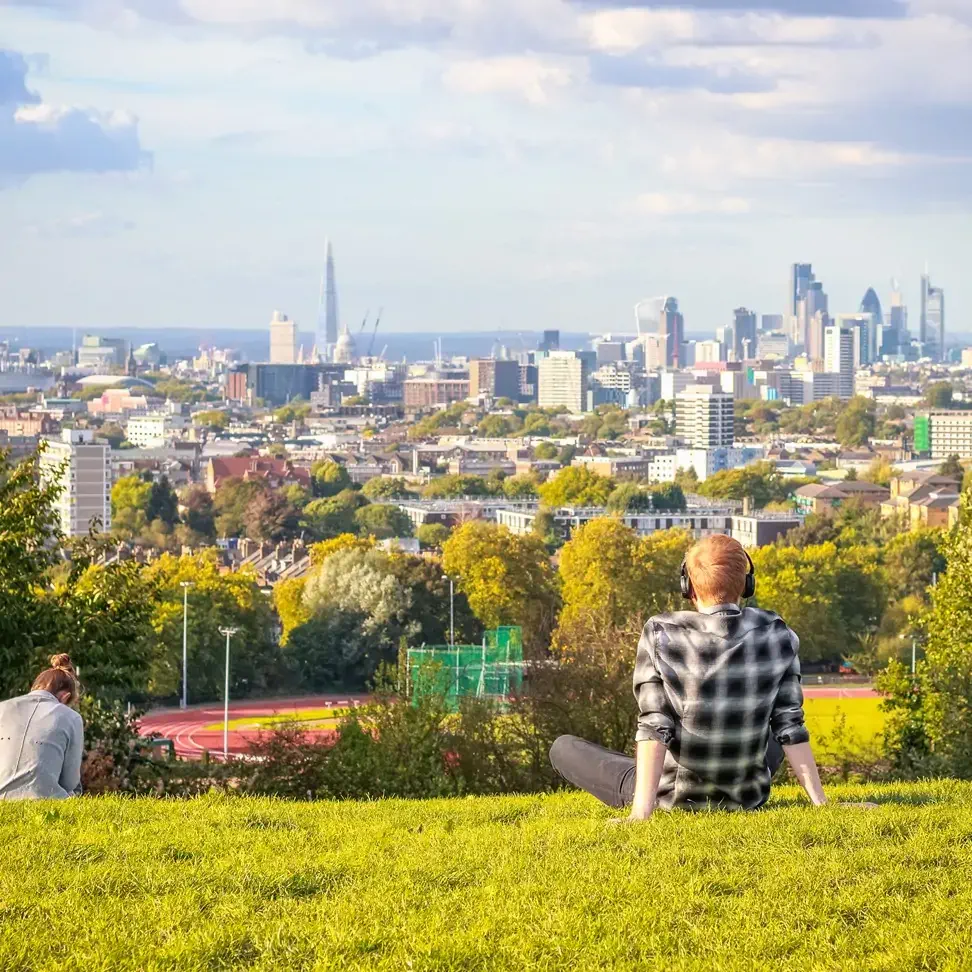From swollen cities to small coastal towns, there is a whole world out there, vying for your first footsteps and waiting to be explored. Paved roads may lead you to new experiences, but some of the most magical spots simply cannot be reached by taxi, train or tour. No, that perfect sunrise, most holy of sites or ancient of ruins often lies at the end of a mountain pass or winding trail, accessible only to the determined and the ambitious traveler.
Incorporating hiking into your travel style opens up a whole range of opportunities for truly off-the-beaten track discoveries. However, whether it’s a multi-day trip through the Andes in Peru or a day out in one of Utah‘s national parks, there are some essentials you have to know.
Andrew and Emily, our adventurous collaborators, and authors of the blog Along Dusty Roads, share their experiences to prepare you for your first of many hikes.
Plan your route
Hiking will lead you to hidden treasures like Laguna Verde, Colombia © Along Dusty Roads
As a beginner hiker, your first follies into the wilderness are unlikely to take you to Everest Base Camp, but that doesn’t mean you should neglect planning a route. Knowing how and when you’re going to get somewhere, understanding the terrain you’ll face and having an idea of important ‘mile markers’ is crucial to keeping you on track, on time and off Search and Rescue’s radar.
While most well-used hiking trails have markings to guide your way, knowing how long it should take you to get from point A to B will help you understand, sooner rather than later, if you’ve gone off course. So, doing adequate prep and research before any and every hike, is essential.
Be aware of your limits
If your fitness is a little lacking, walks in the countryside and gentle hill climbing are a fantastic way to get back into shape. However, if your gym card has been gathering dust and climbing the office stairs after lunch gets you out of puff, don’t attempt the Inca Trail on day one. Be aware of your fitness levels and do not attempt a trail or hike which is only recommended for those with experience or good levels of fitness.
Prepare yourself while at home to make the most of your time away – ease yourself into gentle hikes with little to no incline and break up longer walks with frequent pauses. A good hike should leave you a little breathless, but you’ll not be able to enjoy the view if you’re bent over gasping for breath.
Keep your feet happy
Find the right fit to keep your feet happy during your hike © Along Dusty Roads
While it’s certainly not necessary to be kitted out head to toe in the most up-to-date outdoors gear, there are few items of clothing that will make hiking for beginners a little easier and a lot more enjoyable. Firstly, and most importantly, you’ll need a good pair of shoes. Whether you opt for a hiking shoe or boot is a personal choice (and a bone of contention amongst the hiking community!), but there are a few things you need to consider when buying either i.e. issues such as ‘do they fit well?’ are best addressed on a shop floor rather than two hours into a 6-hour hike!
The best way to ensure a good fit is to buy them from a proper outdoors/hiking store rather than online. These guys are trained to assess how you walk and how the shoe/boot suits your foot, and are the crux to putting your best foot forward on your first hike. A few extra things to consider are whether it has a good grip and how waterproof it is – both really important in bad weather and across slippery surfaces.
Layer your clothes
You need to learn the importance of layering. Very rarely will the weather or temperature remain the same throughout your hike, and that cold chill in the air as you set off may well turn into clear blue skies and sunny days. By wearing lots of thin layers, you can remove clothing slowly as the weather, and your body temperature, changes.
If in doubt about the day’s climate, wear more and pack a lightweight, waterproof jacket to cover any eventualities; you can always remove unwanted clothing but you’ll struggle to find any more when you’re clambering through the forest.
Find the right backpack
When you call to mind images of mountain climbers and seasoned hikers, you may well think of large backpacks, walking poles and camping gear. But, if you’re just starting out, your load should be significantly lighter.
To begin with, you need to find a bag that fits. Your old high-school backpack might suffice for a walk around the block or a hike of a couple of hours, but anything that is going to remain on your back for hours or days at time needs to do so without causing you discomfort. Hip/chest straps can go some way to help with this, as can sturdy straps with padding and picking a bag that sits flush against your back with adequate support.
Keep hydrated and energised
Frequent breaks and healthy snacks will give you the energy you need to power through © Along Dusty Roads
We all know that you need at least two litres of water to function on a normal day. Hike up the side of a mountain however, and your day will be anything but normal – your body will be crying out for an energy boost and extra hydration!
Regular hikers should definitely consider investing in a re-usable plastic or metal bottle. They’re much better for the environment, often come with a little attachment to make it easy to affix to your bag and only needs to be bought once. There will not necessarily be refill stations along hiking routes, so making space and provision for carrying the necessary amount of water is hugely important.
For food, the world is your oyster (or at least until your lunch box is full!). You’re going to want to have small snacks for a quick energy boost as you walk and a slow-release lunch to keep you sustained all day. Items such as nuts, energy bars, chocolate, fruit are great on-the-go and can easily fit into a small pocket in your jacket or your bag. A carb-heavy bowl of pasta or protein filled sandwiches make a great lunch.
Just remember to take your rubbish with you – your fellow hikers (and Mother Nature) will appreciate it!
Read more: the best travels gadgets you need to own
Stay safe
Observe your surroundings and pay attention to the weather © Along Dusty Roads
It seems that barely a month goes by without hearing of some unfortunate backpacking incident. So, unless you’ve got marine-like navigation smarts or survival skills to rival Bear Grylls’, you’ll need to take a few simple precautions before setting out.
For starters, it goes without saying that you shouldn’t hike alone, especially as a beginner. Secondly, robberies along hiking routes are uncommon, but not unheard of, so try to take as few valuables with you as possible. If in doubt, chat to locals on the ground, or reach out to the tourism board associated to your hike ahead of your trip.
Also, keep an eye on the weather forecast. A delightful snowy trail under a perfect blue sky may be a wonderful way to explore a new place, but less so if the clouds suddenly appear and you get caught in a storm. In these situations, don’t be afraid to turn back – weather can suddenly go from bad to worse, and the last place you’ll want to be if this happens is in the middle of the wilderness. Finally, save some essential space in your backpack for a small first aid kit. It doesn’t need to be all-singing, all-dancing, but it should provide you with the means to strap a twisted ankle or clean and dress a cut or scrape.
Have fun
In the words of Jack Kerouac, a hiking enthusiast, “because in the end you won’t remember the time you spent working in the office or mowing your lawn. Climb that goddamn mountain.” Just remember to plan your hike conscientiously – with the right mindset and preparation, you’ll have ample room for staying curious.




